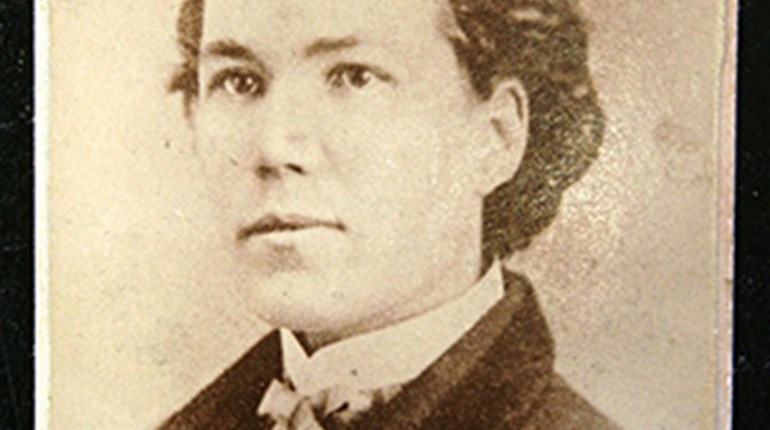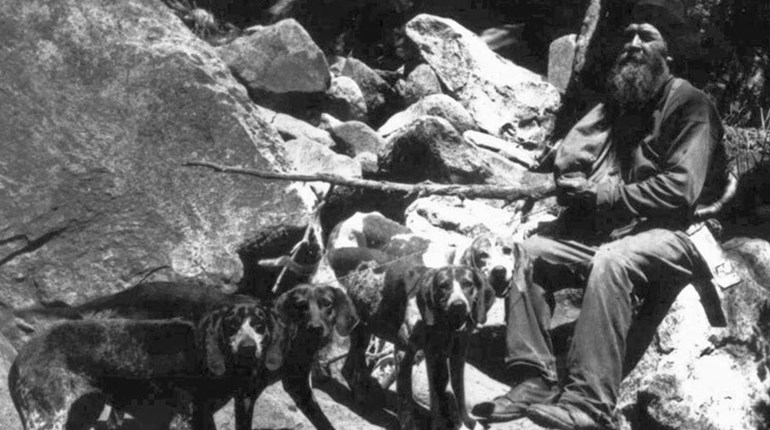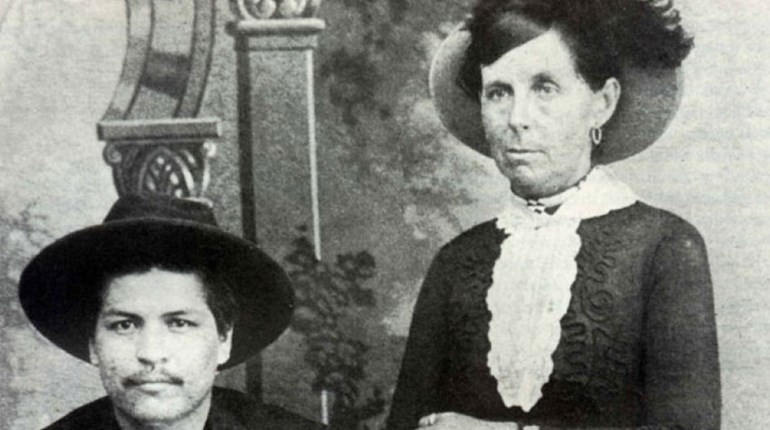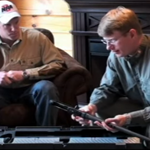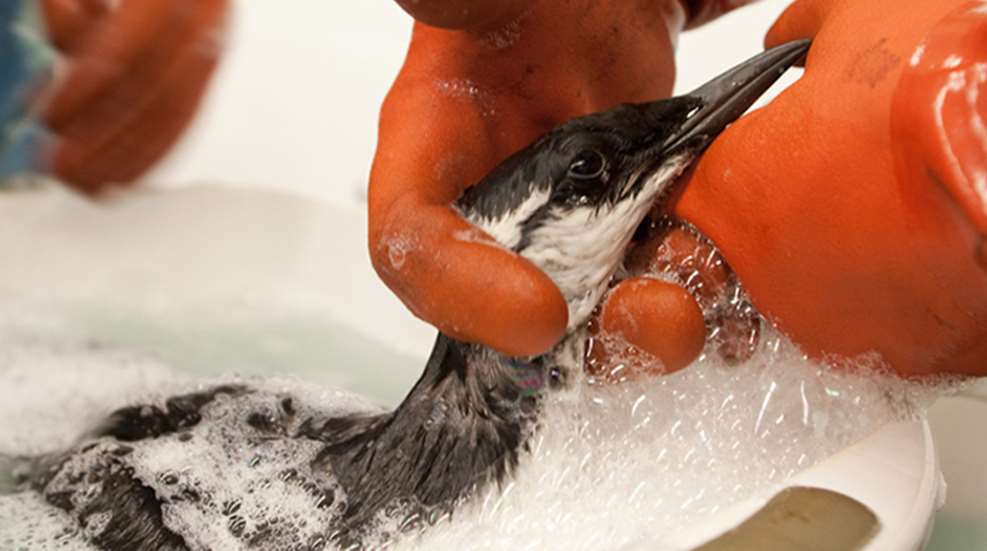
Wildlife rehabilitator Jay Holcomb grew up near the sea, where he recalls “loving, enjoying and exploring" the shore with his nature-loving family. He became fascinated by the creatures that lived there. “It instilled a passion in me," he says. “I think I came into this world with a passion and a fire."
Although Holcomb knew from early childhood that he wanted to help animals, he wasn't sure how or in what way. So as soon as he completed high school, he sought out animal-related jobs. “I did all these things and took all these jobs [with animals] that would give me a start," he says. “I figured one door would open another."
And that's just the way it worked out.
In 1971 there was a large oil spill in Say Francisco Bay. Holcomb jumped at the chance to volunteer his services. “That was the spill that started International Bird Rescue," explains Holcomb. “I volunteered because the birds were just brought to all these buildings, and I tried to help."
But nobody knew exactly what to do or how to do it. People wanted to help, but there was a lot of making things up as they went along, and a lot of the birds died-about 7,000 plus.
Nevertheless, Holcomb had found his passion. Now he had to figure out a way to develop that passion into a full-time profession.
From Passion to Profession
“Wildlife rehabilitation wasn't a field of work when I was a kid, other than maybe somebody taking a baby bird home and raising it or something; but that wasn't really considered wildlife rehabilitation," says Holcomb.
So there was no formal training available. “I had common sense and absolute passion and interest," he continues. “I learned from veterinarians about some of the medical care of the animals. I learned what I read about the natural history of animals-the young ones, what they ate and what they did, trying to help them back into the wild. Nobody taught you how to rehabilitate an animal. It was much by trial and error. Myself and many other people, eventually, we started working it out, and today it's actually a field of work with protocols and guidelines for how to do this for different species."
Following his first oil-spill rescue effort in 1971, Holcomb volunteered to help whenever there was a spill in the area. By 1986 he had a boatload of experience with oiled wildlife, and joined the staff of International Bird Rescue, often called Bird Rescue for short. There, he served as Executive Director for 25 years and is currently Director Emeritus.
Rehabilitation Success Story
In recalling the almost 200 oil spills in which he has participated, one of the bird rescue efforts Holcomb's most proud of is the Treasure oil spill in 2000.
“If you created a worst-case scenario, it happened," says Holcomb.
The ship MV Treasure sunk off the coast of Cape Town, South Africa, between Dassen and Robben islands, spilling some 1,300 tons of oil. Now it turns out these islands support both the largest and third-largest African penguin colonies the world-about 40,000 penguins in all. The spill immediately oiled half of them.
The problem was made worse because it was nesting season, and penguin babies are never left unattended. “What happened," explains Holcomb, “was the penguins were coming on the island to go to their nest with babies in them. They'd come in after feeding to relieve their mates, so the mates could go eat."
Because of the oil spill, when the clean mates left the island, they'd go out to sea through the oil, become oiled and die. This meant the penguin back at the nest was unable to leave for food.
SANCCOB, the South African Foundation for the Conservation of Coastal Birds, was unable to handle the situation alone and asked for help. Enter International Bird Rescue and Jay Holcomb. “They [SANCCOB] thought they could handle a thousand or two birds, and there were going to be thousands," says Holcomb. “When we got there, there were 20,000."
Under the direction of Holcomb, International Bird Rescue captured the non-oiled penguins and sent them away so they wouldn't become oiled. They collected the baby penguins and rounded up the oiled penguins as they were coming back to their nests.
In all, 20,000 oiled penguins and 3,000 babies were housed at International Bird Rescue's rehabilitation facility, which was set up in a train warehouse outside Cape Town. “We ended up spending three months there," says Holcomb. We brought in people from all over the world, and we worked with the local people. We used everything we'd learned over the years with other penguins."
The effort was a huge success. At the end of the three months, they'd released 19,000 penguins, or about 95 percent of the penguins at the rehabilitation facility.
“We managed to make it through," says Holcomb. “I don't know how we did it. The chicks all survived and the oiled penguins have had equal survivability as the penguins that were not oiled. Not only did we do our job, we actually contributed to the survival and the conservation of the species."
Problem Solving
Ask him what his favorite part of being a wildlife rehabilitator is, and Holcomb has a ready answer: “Working with the staff on the rehabilitation of animals." But he's not referring to just the handling of the animals. “I like the problem-solving aspect of rehabilitation," he explains.
“Keeping the cage clean and that kind of thing is part of it, of course, because they're animals," says Holcomb. But what challenges him is trying to figure out ways to improve the animal's care. “I have 40 years' experience, and I have so much information to offer up-information I sometimes don't even know I have," says Holcomb. “That's what I like best, I think, being able to use what I've learned to help make it better for animals."
Recent Activities
In 2010, Holcomb was awarded the Oceana Ocean Hero Award for his commitment to ocean conservation. At the time, he was leading International Bird Rescue's efforts on behalf of the birds caught in the BP oil spill in the Gulf of Mexico. “I was there three months on site at the facility in Louisiana," he explains.
Last year, Holcomb decided to transition from Executive Director to Director Emeritus, a change that allowed him to turn over the management of the staff and move to Washington State, but by no means retire. “I go back to California all the time," he says. “I check e-mails and do interviews from Washington, and I consult with the rehabilitation staff."
He still goes to oil spills, and he works on special projects. Right now, for instance, he's working on a project to color-band pelicans so they can be monitored after their release. “We get in more than 600 a year and we release between 300 and 400 along our coast," says Holcomb. The color banding helps rehabilitators find out if the released pelicans are surviving.
Is It For You?
“I'm a real believer that when you're interested in something, it'll call to you," says Holcomb, “but you have to keep opening all the doors every day and keep looking."Does the idea of helping animals call to you? Do you work well with both people and animals? If so, maybe the career of wildlife rehabilitator is the “cool job" for you.
For more information about Jay Holcomb and the International Bird Rescue, go to www.bird-rescue.org. You might also want to watch the trailer for HBO's “Saving Pelican 895," a documentary based on the rescue of penguins after the BP oil spill of 2010 that features Holcomb and the work of International Bird Rescue.
Holcomb's Tips for What You Can Do Now
1) Learn about nature. Spend time in the outdoors and read about animals and animal rehabilitation, particularly on the Internet.
2) Study the animals you're interested in-everything from dogs and cats to wild animals-and learn about programs to take care of them. See if you agree with the ethics or point of view of a particular program or organization.
3) Find out about rehabilitation centers. Although International Bird Rescue doesn't take volunteers under 18, other organizations do. Look in your local area for opportunities.
4) Take on the responsibility of a pet-a dog or a cat, for instance. If you're interested in birds, a parakeet might be a good start.
5) Learn how to work with people. This is an absolute requirement for a wildlife rehabilitator.
6) If they're offered, take some biology courses through your school.
7) You have to want to make it work more than anything, to be able to say, this is what I'm going to do no matter what. Go for it. Look for it. Keep that focus.
Wildlife Rehabilitation Organizations
National Wildlife Rehabilitators Association
The International Wildlife Rehabilitation Council













